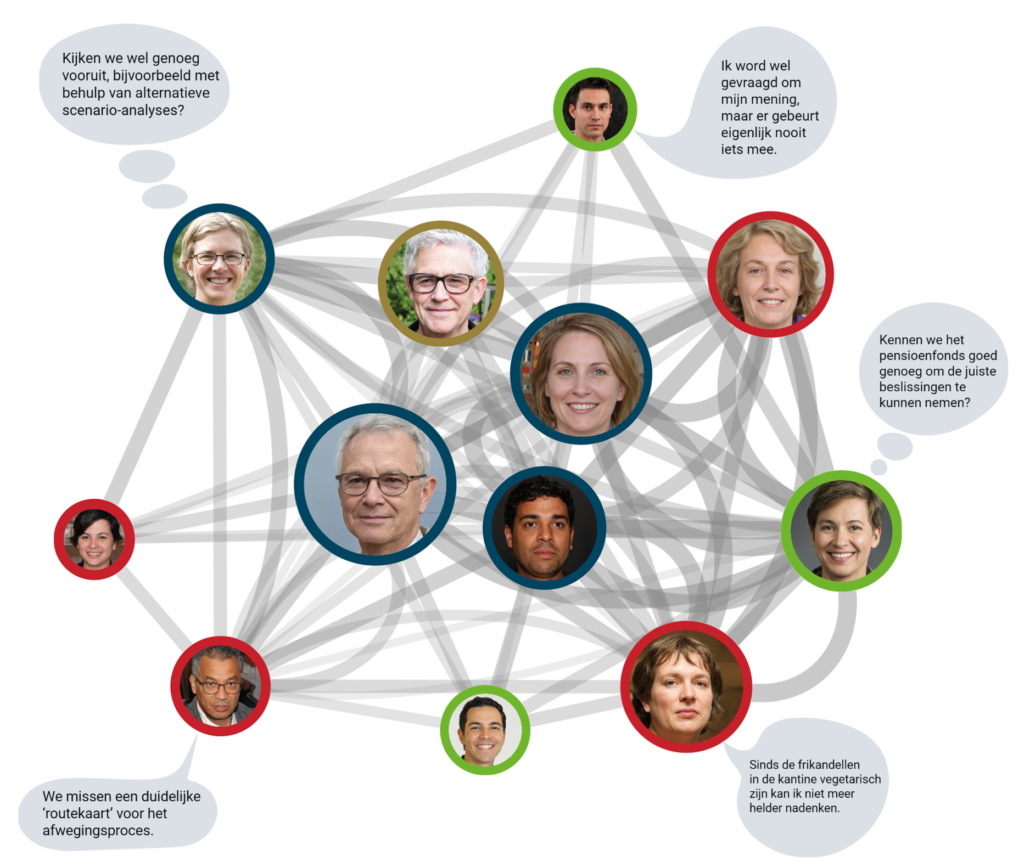DNB research shows that directors and supervisory directors usually do not consciously manage the human aspects that determine the success and effectiveness of the organization. They often work primarily from their professional expertise. The importance of behavior and culture is stressed, but the actions do not always lead to the desired changes in behavior and culture.
The Supervisory Board (SB) and Board of Directors (BoD) regularly conduct a self-assessment of their own performance, as included in the Corporate Governance Code. The SB and BoD are free to make their own interpretation of the self-evaluation, as long as it is established how the evaluation takes place and how the conclusions are followed up.
Topics
Important topics in a self-assessment are:
Leadership
Leadership plays an important role in the boardroom. For example, the president may or may not be very dominant. Or everyone gets to speak, but decision-making is then based on a single vision.
Decision-making
For balanced and consistent decision-making, a clear division of roles and tasks within the Executive Board and between the Executive Board and Supervisory Board is important. New perspectives and risks must also be adequately addressed for quality decisions in line with strategy and organizational goals.
Group Dynamics
Many social-psychological factors play a role in group dynamics, such as conformism and “groupthink. Conformism means that individuals conform their opinions, behaviors or attitudes to “the norm. In other words, people tend to rely on and adopt the opinions of others. Groupthink is the phenomenon of primarily pursuing consensus over quality decisions.
Communications
With a clear communication strategy, the BoD gives direction to employees. Communication styles within and between the BoD and SB determine the depth of dialogue and the extent to which space is created for discussing risks and better alternatives.
Added value of social network analysis
As an example, we look at the pension fund board of the PoenVoorLater Pension Fund. The board consists of 12 members representing employees, employers and retirees:
- one independent chairman (no voting rights)
- four board members on behalf of employees
- four board members on behalf of employers
- three board members on behalf of the pensioners
Board members represent various interests such as:
- A good pension requires taking investment risk (employees’ perspective).
- Young and old participants must be able to count on a pension, but it must remain affordable (employers’ perspective).
- Solidarity between young, increasingly aging workers and older workers and retirees must be balanced (retiree perspective).
Within the boardroom, it is important that different interests (can) be equally represented. The following network figure shows how decision making occurs and the role everyone plays in it.


The network figure shows differences in the extent to which insights and ideas from individual board members are incorporated into decision-making. Both employee representatives and the president seem to have a stronger voice.
This can have several causes: for example, is sufficient time given to allow everyone to speak? How are the insights translated into more than the sum of their parts? Is there room for innovation in the approach to reach a decision?
Conclusion
Social network analysis is a useful contribution to discussing the performance of BoDs and SBs. By analyzing and visualizing individual members’ behavior and group behavior, “the right conversation” can be had and interventions defined and recorded.













